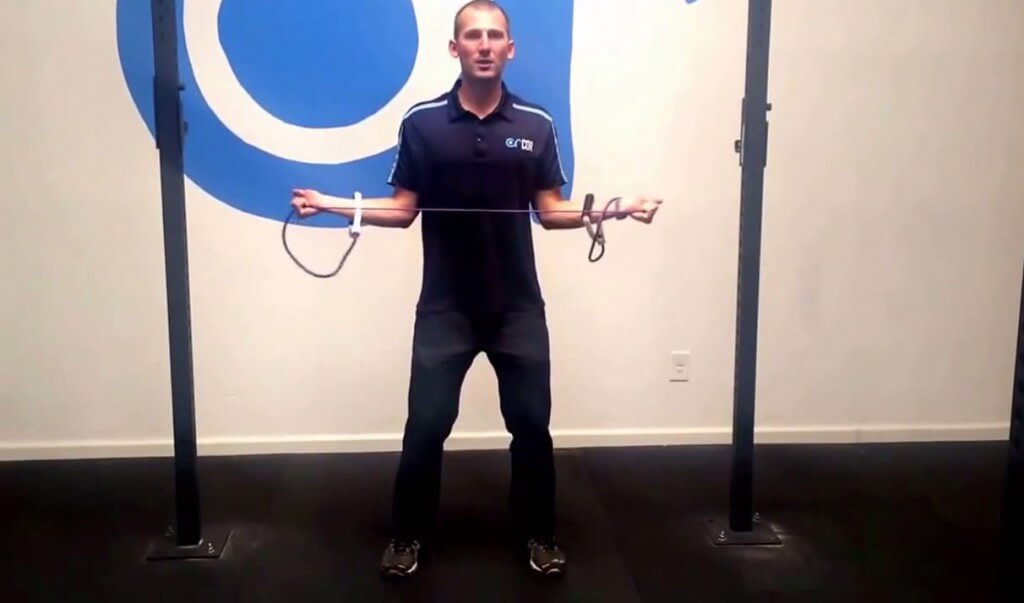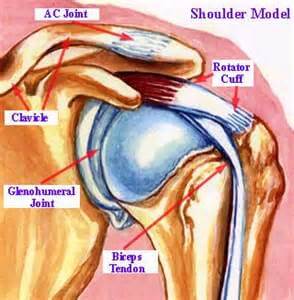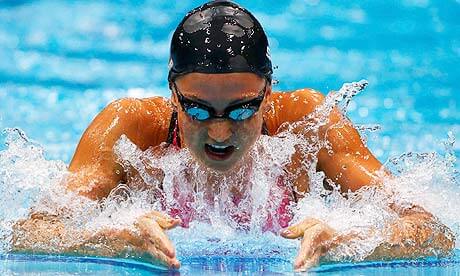3 Common Swimming Injuries with Prevention Tips

By Tori Caudill, Swimming World College Intern
Swimming is a relatively low impact sport, but our sport’s repetitive movements can often lead to nagging injuries. Every sport comes with a set of specific injuries. The list of injuries for swimming may be shorter than that of sports like football and baseball, but competitive swimmers can still fall victim to injury. Many of the injuries dealt with by swimmers are less than severe, but can become serious if left untreated. The two most common locations for injury are the shoulders and the knees…
1. Swimmer’s Shoulder
Swimmers shoulder is very common, especially freestyle swimmers. Many times freestyle swimmers power through long practices with small amounts of stroke mixed into the workout. This constant repetitive motion can lead to pain and inflammation due to incorrect technique or overwork in the shoulder joint.
Prevention starts with technique correction. When swimmers master the correct techniques there is less stress placed on the shoulder causing less pain. Along with technique correction, limiting the amount of arm heavy drills and pulling with paddles can aid tremendously in preventing further injury. Another approach to swimmer’s shoulder prevention is to incorporate orthopedic band exercises into the stretching routine daily to build shoulder strength.
Treatments for swimmers shoulder are rather simple, with a regiment of icing the affected area and anti-inflammatory medicine to reduce swelling.
Ashley Drier, athletic trainer at Lindsey Wilson College, also recommends low weight dumbbell exercises with internal and external rotation along with ultrasound and stem machine treatments.
Swimmer’s shoulder can also be known as rotator cuff impingement.
2. Labrum Tear
A more severe form of swimmers shoulder, if left untreated, can result in a tear of the labrum. This injury is very serious and always requires surgery. Along with the surgery, swimmers suffering from labrum tears are expected to complete a physiotherapy regiment in order to aid in recovery and prevent muscle atrophy.
According to Drier, different kinds of tears require different exercise regiments, though those recovering from surgery usually start with range of motion exercises before moving to strengthening.
Serious cases can cause swimmers to be out of the water for four to six months, though if caught before a tear occurs the period of recovery lowers drastically.
A tear of the labrum is the late stage of swimmer’s shoulder and can often, though not always, be prevented by the techniques mentioned above.
3. Breaststroker’s Knee
Breaststroker’s knee is a very common injury among swimmers who swim breaststroke, though others may also develop the injury. Due to the wide kick and over rotation of the knees during breaststroke, inner parts of the knee often become inflamed resulting in sometimes chronic pain.
“With the breaststroke movement a lot of stress is placed on the MCL,” said Drier. “We usually start working on quad strength and make sure the patella is tracking correctly. This can be hard with swimming since swimmers can’t really wear knee sleeves in the pool.”
However, this knee pain can be prevented. By making sure to warm up correctly and allowing the muscles to become warm before attempting the sometimes painful exercises, much of the risk of pain can be taken away. By using a modified breaststroke kick with less of a “w” shape as traditionally seen and more focus on the technique in the hips, breaststrokes can continue to swim the stroke without pain.
It is always easier to prevent an injury with proper techniques than it is to rehabilitate after an injury has occurred. This rings very true with knee injuries, which can be hard to treat. With this kind of knee pain, it is best to try and take a break from swimming breaststroke while trying to build strength in other ways before revisiting the stroke. Also, just as with swimmer’s shoulder, ice and anti-inflammatories can be of substantial help.
Though often injuries in swimming are not as serious as an MCL tear or a concussion, even seemingly menial injuries should not be taken lightly. With any kind of injury it is very important to address the issues at the first signs and symptoms. Understanding that this may not always be possible it is wise to keep in mind not to continue with an activity if pain does persist.






Julieta Alvarez
Samir Sliti
Brittany Archer
9 months out of surgery for a torn labrum / shoulder instability. Finally feel good enough to get back in the pool.
Mac Faldet….you need to read this. Warm up, warm up, warm up and cook down!!!
Noah Faldet. You should read this. Warm up, warm up, warm up and cool down.
LeeAnn Tobias